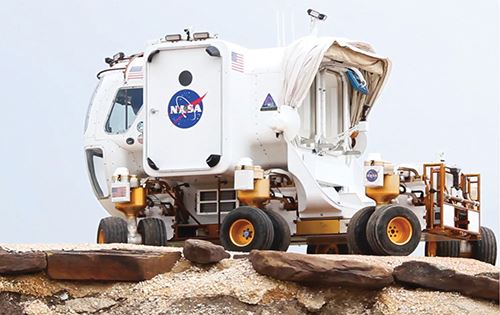NASA's 'Mars Rover' Has Many 3D Printed Parts
A Fortus 3D printer from Stratasys, Inc., Eden Prairie, Minn., was used by NASA to help build a next-generation rover capable of supporting two humans on near-earth asteroids and Mars.
A Fortus 3D printer from Stratasys, Inc., Eden Prairie, Minn., was used by NASA to help build a next-generation rover capable of supporting two humans on near-earth asteroids and Mars. The rover is about the size of a Hummer and has a pressurized cabin and observation bubble.
NASA has been test-driving the vehicle in the Arizona desert, maneuvering it on the unforgiving terrain at weather conditions said to simulate those on Mars. About 70 rover parts were built digitally, directly from computer designs, in a production-grade Stratasys 3D printer. It uses the company’s patented Fused Deposition Modeling (FDM) technology for the creation of complex shapes through additive manufacturing.
NASA engineers chose the FDM method because it uses production-grade thermoplastics like ABS, PC, and PC/ABS, which are lightweight but durable enough for rugged end-uses. The Mars rover parts include flame-retardant vents, pod doors, and many custom fixtures.
One ear-shaped exterior housing (shown) is deep and contorted, and would be nearly impossible to build without 3D printing, according to NASA test engineer Chris Chapman. He says NASA engineers also 3D print prototypes to test form, fit, and function of parts that will eventually be built in other materials. This validates part designs before committing to expensive tooling.
Related Content
-
Resin Prices Still Dropping
This downward trajectory is expected to continue, primarily due to slowed demand, lower feedstock costs and adequate-to-ample supplies.
-
The Importance of Melt & Mold Temperature
Molders should realize how significantly process conditions can influence the final properties of the part.
-
The Effects of Stress on Polymers
Previously we have discussed the effects of temperature and time on the long-term behavior of polymers. Now let's take a look at stress.













